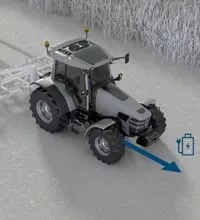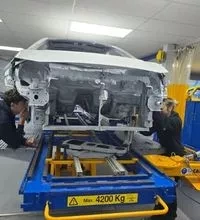MOTs: minor, major or dangerous
In this article: Consultant and MOT expert Paul Charlwood explains why defects can be categorised as both major and minor
When is a defect classed as major, and when is it minor? Depending on how you approach the MOT test and the defects you find, it could fall into both categories.
On a recent visit to one garage, the DVSA vehicle examiner (VE) re-examined a previously tested vehicle, but came to a different outcome to the original tester.
The MOT tester at the garage had failed the vehicle because the parking brake lever pivot was worn to the extent that the brake may inadvertently release. The VE agreed that the pivot was defective, but considered it to be just obviously worn; a minor defect instead of a major fail.
Choose your category
Defects are categorised as minor, major or dangerous. Two of four wheel nuts missing will automatically result in a dangerous defect; simple. Other defects however rely on the tester’s skill and judgement to decide on their severity, as in the case with the handbrake pivot.
In this example, the MOT tester considered the defect meant that the parking brake could let go and allow the vehicle to roll away. But the VE considered the defect was such that the lever was obviously worn, by doing so he regards the parking brake as still being functional and capable of being set in complete safety of the occupants and other road users.
But it isn’t that simple, because highlighting it as a minor defect still means that it needs attention and should be rectified as soon as possible, placing the onus on the vehicle’s driver for the condition of the car.
It can be confusing, but the MOT tester and the VE have come to similar conclusions; the handbrake needed to be fixed, the difference is the tester thought the defect should be fixed with immediate effect, the VE within the near future.
So, who’s right? The VE from the DVSA is trained to meet a technical standard and could well be expected to explain that technical standard in court. MOTs are the DVSA’s specialist subject and the VE is specially trained. So, on the balance of probabilities the VE’s decision is probably correct. But it’s important to remember, that in both cases the vehicle was found to have a fault, and it needed attention, meaning the MOT test is doing its job and improving road safety.
…a word to the wise
It’s worth noting that a minor defect still has to be recorded, even if some testers think they’re not important, as the customer may drive off and never get the defect fixed, so don’t record them. This is completely wrong and you could expect the DVSA to issue penalty points for each minor defect that is not recorded.




